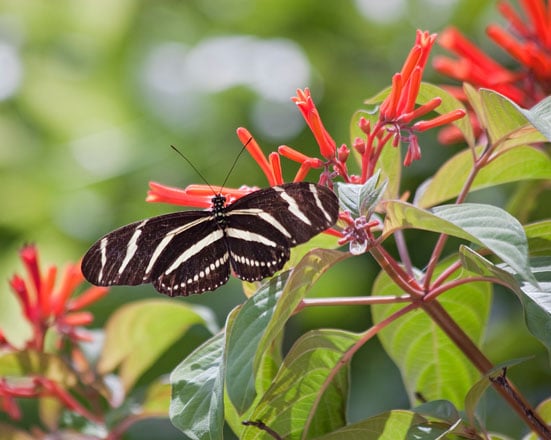

Contributor
- Topics: Archive, Growing Sustainably

[sidebar]Taken from Gardening for Butterflies ©2016 by The Xerces Society. All rights reserved. Published by Timber Press, Portland, Oregon. Used by permission of the publisher.[/sidebar]
A global assessment of wildlife populations in 2014 released by the World Wide Fund for Nature and the Zoological Society of London (ZSL) found that the sheer number of vertebrates on earth had declined by more than 50 percent since 1970. While the ZSL report did not assess insect populations, irrefutable evidence of their decline and clear examples of insect extinctions can be found. Many of the rare insects have always been rare, but now once-common insects are becoming rare as well. The most striking example of this is the iconic monarch butterfly, whose population has declined by 80 percent across North America since monitoring efforts began in the mid-1990s.
Loss and degradation of habitat is driving this disappearing act. Urban landscapes divide up, pave over, and fragment formerly green spaces. Agriculture favors fewer types of crops, leaves fewer edges unplowed and untrampled, and tolerates ever fewer “pests.” The wild places that remain bear the indignities of invasive species, climate uncertainties, and hardscrabble resource extraction such as mining and logging. The net result is that 7 billion humans have finally created a fully human-dominated world.
Despite the biodiversity crisis unfolding in real time all around us, we believe that butterflies and other animals can have a secure future. However, such a future will require reconciliation between the human environment and a more natural one. Policies that could accelerate such a reconciliation are desperately needed. At the same time, as individuals we cannot simply stand by and do nothing while we wait for those policies. At least in the case of butterflies, every one of us who gardens has the potential to change the world.

This book is designed to be a blueprint for that change. Whether you live in California’s Central Valley, upstate New York, or the panhandle of Texas you can play a critical role right now in saving the earth’s butterflies. You don’t need a large space. A small yard with just a few native plants can attract and sustain dozens of butterfly species. And beyond aiding butterflies, your yard can become a wildlife refuge for all of the creatures that pollinate crops and wildflowers in your region. Your efforts will support countless other creatures as well, from lady beetles to songbirds. The insect populations that grow and thrive in native grasses and forbs around your patio will increase in number and disperse, and their descendants will ultimately go on to feed fish and bears and bats. If you manage larger landscapes, the gardening concepts described in this book can easily be scaled up to provide habitat on roadsides or in parks and natural areas.

Finally, when you share what you do, your garden can become a platform for science education, connecting kids to the amazing life cycle of butterflies, from caterpillars and their host plants to the incredible process of metamorphosis, to the colorful adults drinking nectar from equally colorful flowers; this exposure can build a new generation of conservationists. Similarly, by sharing your efforts with neighbors, other gardeners, community groups, and local conservation agencies, you are giving those people a living template to inspire their own efforts. You are changing expectations about what our human-dominated landscapes should look like; you are exposing gigantic manicured lawns and insecticides as embarrassingly uncool; you are creating a world where it is no longer weird to be the person with the overgrown, wildflower-filled yard and instead making it weird to not be that person.

When you create this world, you will bring back the butterflies, the other bugs, and ultimately all of the animals that have become so absent from our lives. Who would have thought that some simple landscaping could do all of that?
Share:
Social Media
Garden Futurist Podcast
Most Popular
Videos
Topics
Related Posts

Low Maintenance Gardens – Better for Pollinators and People
Autumn 2022 “I come out every day. It’s therapy, my meditation.” Janet’s young garden transformed from overgrown, invasive plants to mostly natives. The dailiness of

Calochortophilia: A Californian’s Love Affair with a Genus
Summer 2022 I can chart the progression of my life by Calochortus. For the last two decades, at least. As a teenage girl growing up

Pacific Plant People: Carol Bornstein
Spring 2022 Public gardens play a key role in demonstrating naturalistic planting design, selecting native and adapted plants for habitat, and testing techniques for reducing

Add Year-Round Interest and Winter Blooms for Pollinators
Spring 2022 This article was created from an Interview by Merrill Jensen with Neil Bell in the Summer of 2021 for our Pacific Plant People









